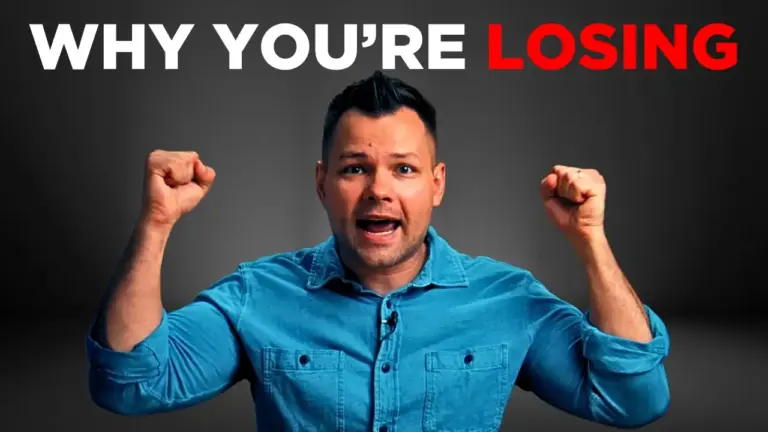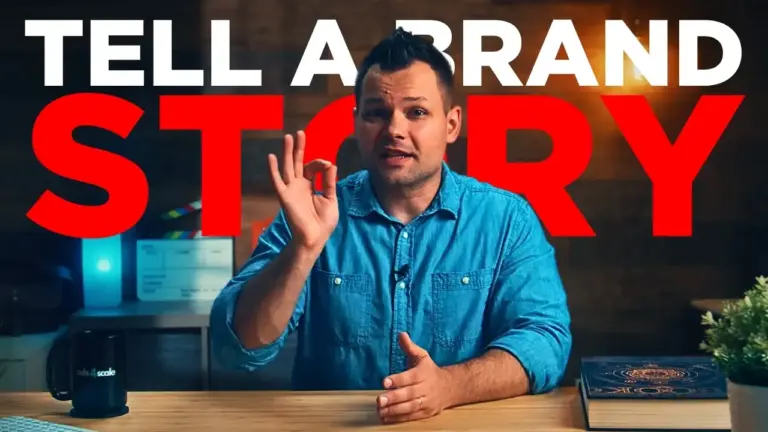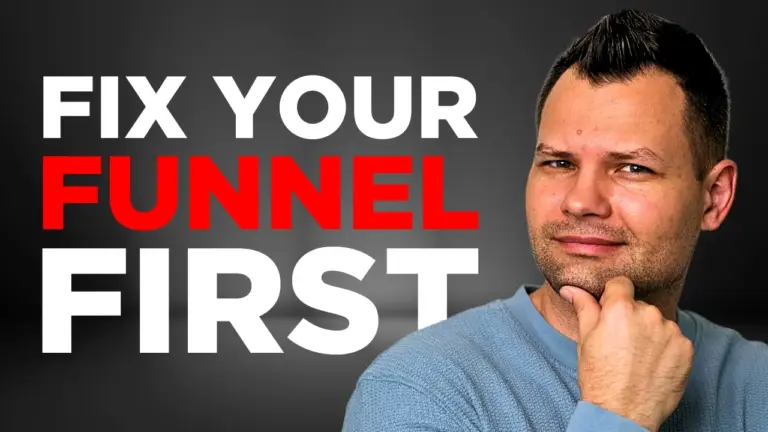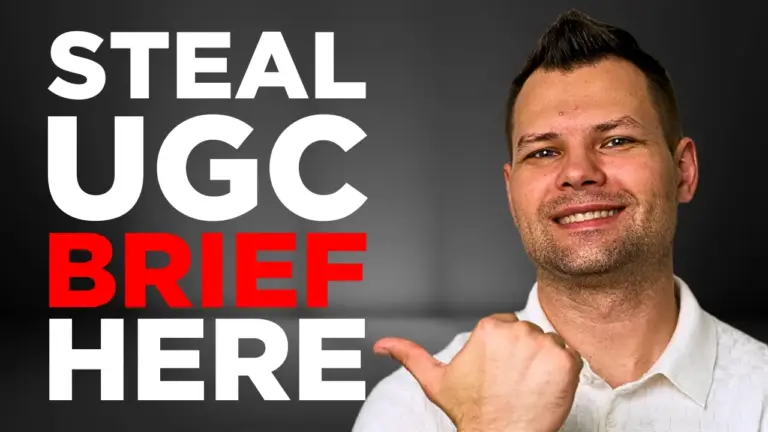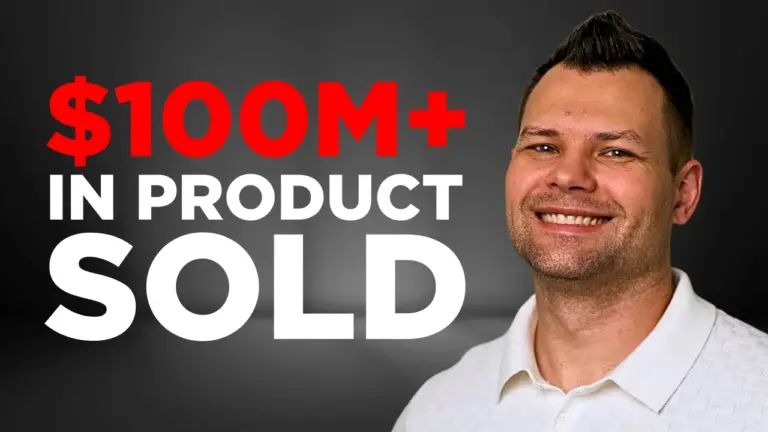Introduction
Most DTC businesses waste time and lose money, rather than gaining consistent sales, because they make five critical mistakes in how they use video marketing to drive product sales and generate leads. In this article, I’m going to share the top five tactics that have helped my clients move more than 100 million dollars worth of consumer goods over the past seven years. But it only works if you take action, so apply these tactics, and watch your business grow.
First, understand that most brands fail with video marketing not because of production quality or even video ideas, but because they lack an overarching ad-creative strategy. I work through these strategies with direct-to-consumer companies every week, and over the next few minutes I’ll show you the exact fixes that can turn loose pieces of video content into a true engine for business growth.

Mistake 1:
Mistake number one: hitting “record” before you’ve mapped the customer journey from awareness to checkout. The fastest way to stop wasting ad dollars is to treat video like links in a chain. Start by sketching the full customer journey as a diagram: Aware, Engage, Subscribe, Convert, Excite, Ascend, Advocate, Promote.
List these eight stages in columns. Under each one, write the single micro-action you want next-step viewers to take. Maybe it’s “click the quiz,” “sign up for a newsletter,” or “finish checkout.” When the path is this clear, you’ll instantly spot where prospects stall and where you’re overspending.
Just seeing the gaps forces you to point every dollar, every hook, and every frame at one objective instead of firing off disconnected clips and hoping for the best.
Now you’ll need to assign video formats that fit each. Up top in Aware, run some ugc videos, direct response ads, or TikTok skits that simply evoke curiosity and stop the scroll. In Engage, drop a two-minute founder story or behind-the-scenes mini-doc that builds trust.
For Subscribe, use a 15-second vertical teaser that drives to a quiz or lead magnet. Convert belongs to polished demos and side-by-side testimonials that answer last-mile objections. Keep new buyers Excited with unboxing reels or day-one setup guides, then slide them into Ascend via personalized upsell clips and feature-unlock walkthroughs.
Finally, flip satisfied customers into Advocates and Promoters with thank-you shout-outs, referral challenges, or user-generated montages. When every video hands the baton smoothly to the next stage, viewers advance without friction, CPAs drop, and your once-chaotic content library turns into a predictable growth engine.
Mistake 2:
The second critical mistake is serving the right video in the wrong environment. User-generated ads have that raw, authentic vibe that feels like a friend’s recommendation, so they do really well in fast-moving social feeds where authenticity beats polish.
Cinematic, studio-shot footage projects certainty and craftsmanship, so it belongs on a product page or landing page where a shopper is leaning in for hard proof. If you flip those placements – both formats will crash.
This happened to a fitness equipment brand that came to work with us. At first, they ran polished product demo videos we’ve produced for them as ads, without telling us, but their conversions were very low. Eventually, we offered to shoot some UGC ads for their social media channels and their conversions grew substantially.
But if you drop an ugly UGC ad on your product detail page, or a website banner placement, your brand may look unprofessional, eroding the perceived brand value that video is supposed to build.
So, always match the video format to the buying stage. In top-of-funnel feeds, lead with phone-shot UGC, jump cuts, and first-person hooks that prove you’re human. As viewers move down-funnel—retargeting ads, email click-throughs, PDPs—upgrade them to crisp B-roll, beauty shots, and on-screen specs that answer, “Is this brand legit?” Keep the core message consistent, but tailor the polish to the platform.
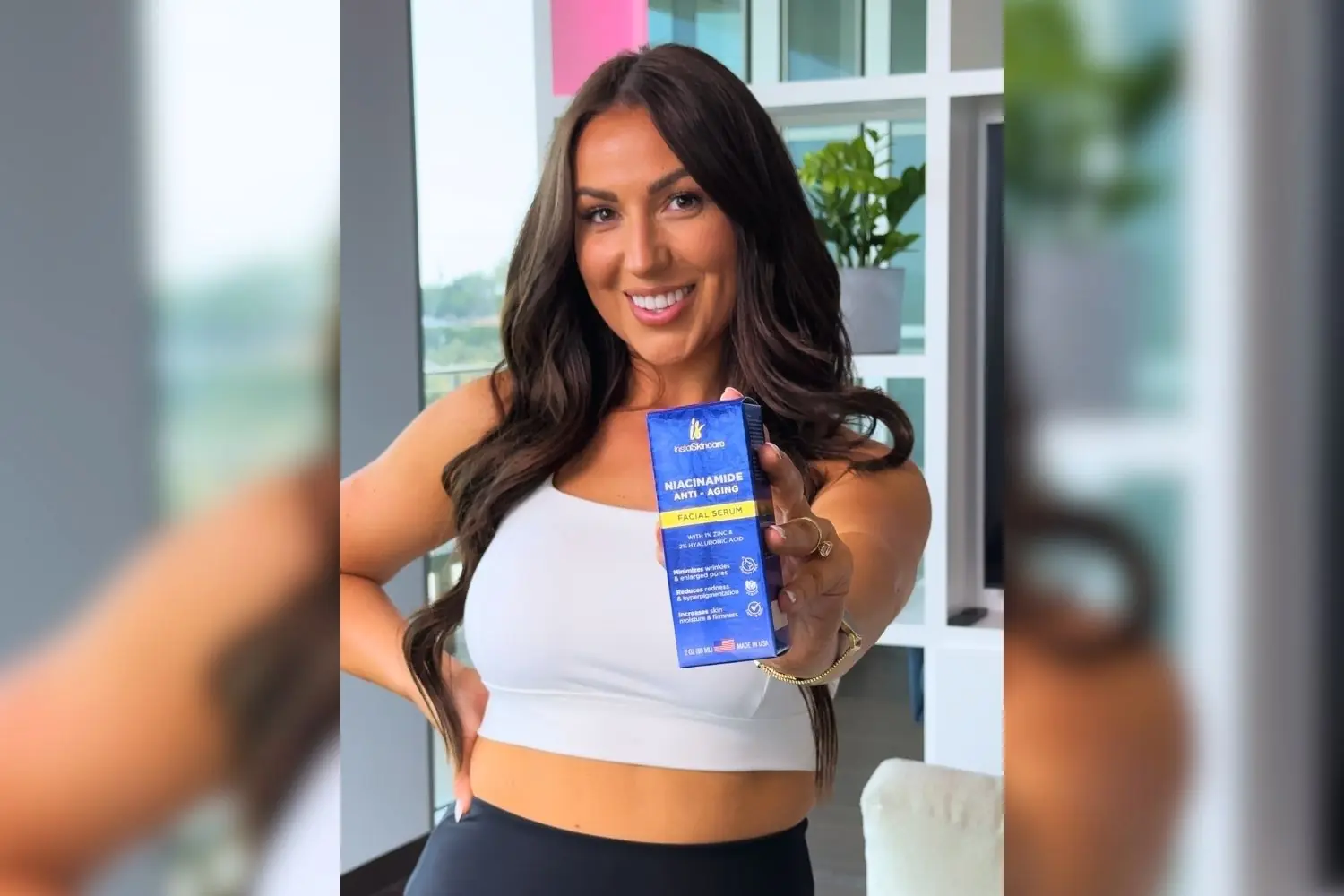
Mistake 3:
The third mistake is allowing your creatives to get to the point of ad fatigue. You launch a new video, it starts strong, and you celebrate. Then a week later the cost to reach the same audience has climbed and sales have slowed. That drop is fatigue. The same people have seen the same hook so many times that they scroll past before the first second finishes.
The fix is a disciplined refresh cycle. Keep your core offer and targeting steady so the algorithm’s learning phase isn’t trashed, but swap the first three seconds before boredom sets in: usually every 7-10 days for warm audiences and every 14-21 days for cold ones.
Record a new opening hook: different setting, fresh caption, an unexpected prop, or a customer sound-bite instead of the founder’s voice. For a book publishing brand, we simply replaced an opening product shot that showed pages of the book with a creator running like crazy around the house hugging that book, then we overlaid a new curiosity line: “3 reasons why this book drives me crazy” Same product, same CTA, brand-new hook. Cost per purchase dropped percent and we squeezed another month of profit out of the campaign.
Mistake 4:
The fourth mistake is pouring your entire creative budget into one cinematic showpiece and hoping it lands. Even if that single video looks like a movie, it’s still just a hypothesis – one angle, one hook, one message. If it fails to resonate, your entire budget goes up in smoke.
A safer, data-driven approach is to break your spend into smaller “test flights.” Let’s say you run an athleisure brand. Instead of sinking $30k into a single hero film, you produce three leaner brand film variations for $20k total. Each of the variations would have a different intro hook and will be adapted for various platforms used in your strategy.
We also help our clients to maximize the production output by shooting a bunch of product stills simultaneously with video production.
The remaining 10k of the budget would go to covering a good juicy pack of UGC content to run on Meta and perhaps TikTok. You launch each with the same targeting and cap initial spend at, say, $50 per ad set. Within 48 hours, you see that the customer-story version delivers a 2.4 × click-through rate and floods the comments with “I need this.”
Winning creatives get scaled in the next production batch; losers get paused or re-edited. You learn fast, scale only what works, and protect your wallet from the all-or-nothing gamble. By the way, I’m speaking from experience because this is the way we help our clients protect their ad producing budget.
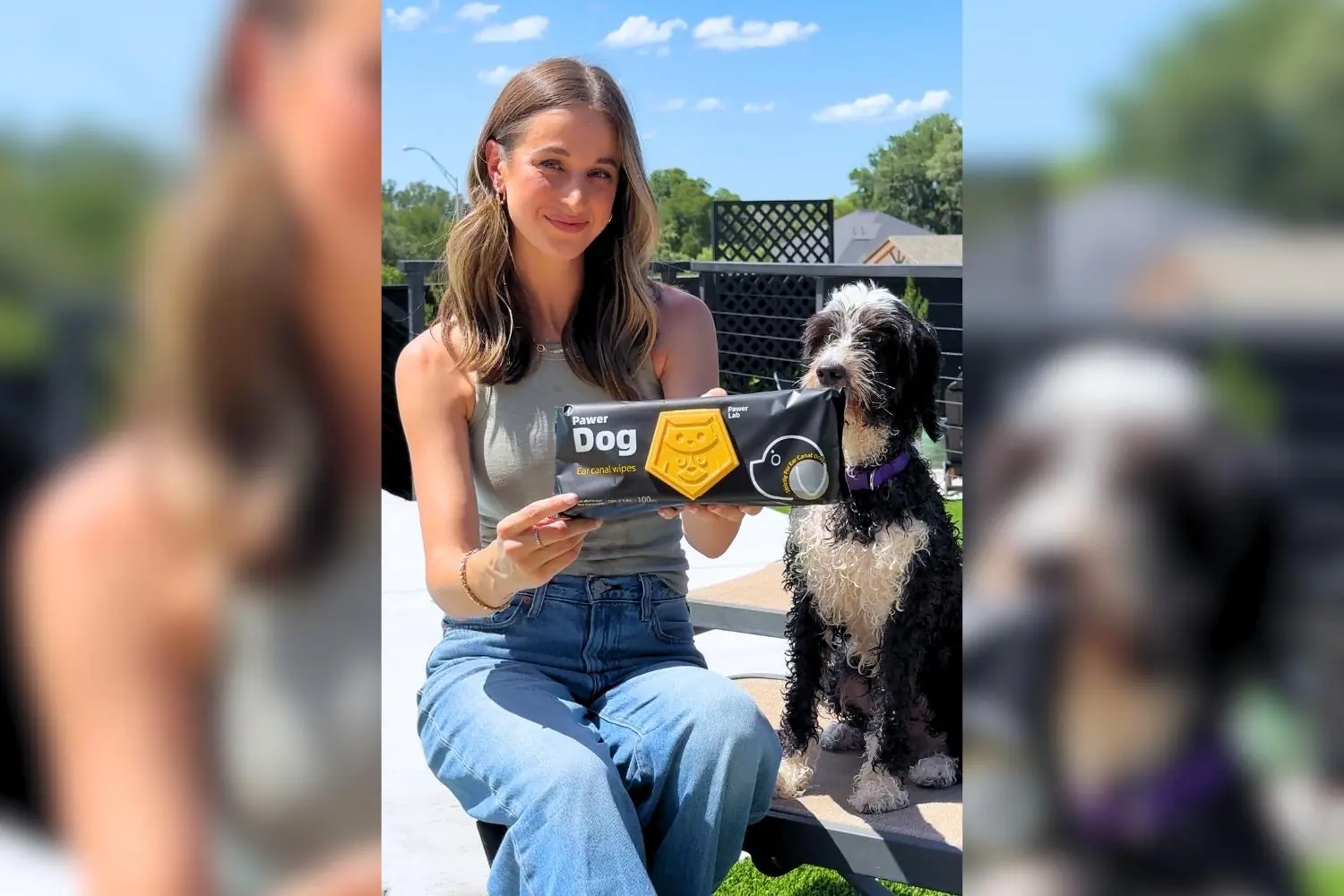
Mistake 5:
Many brands fall into mistake number five: they obsess over bid tactics and audience hacks while letting the creative limp along. Data from Meta and Google point to the same truth – anywhere from 56 to 70 percent of a campaign’s sales impact comes from the idea on screen, not the setting you change in Ads Manager.
So how do you build a creative that actually pulls its weight? Start with empathy and relentless audience research. Dive into customer reviews, Reddit threads, Amazon Q&As – any corner of the internet where your buyers vent hopes and headaches. Think how they think, speak how they speak, consume what they consume, and nine times out of ten the ad will write itself.
Dollar Shave Club’s breakout spot wasn’t a media-buying miracle – it was a 90-second spot ripped straight from conversations men were already having about overpriced razor cartridges. Because the founders lived in shaving forums and drug-store aisles, they knew the exact joke that would slice through the noise. So they spent a fraction of Gillette’s budget, yet the launch video drove 12,000 orders in 48 hours and set the company on a $1 billion exit path.
So try doing this – block one hour each week for a brainstorm session: open up Trello or a similar kanban board and start creating separate cards for each pain or desire. Group similar cards, then assign each cluster to a hook style – bold claim, question, testimonial, demo.
Next, fire up ChatGPT or any ad-copy model and ask targeted prompts like “Write five three-second hooks that promise to solve such and such pain point for such and such buyer.” Pick the top three ideas, storyboard quick UGC shot lists, and launch them with a capped test budget. Get in a discipline of continuous insight-mining and you’ll never run out of creative ideas again.
Conclusion
Those are five common mistakes, and any one of them can lead to wasted ad spend or keep your brand from accomplishing a specific business goal. The way out is just as clear: plot each video to a step in the buyer’s journey, rotate creative before boredom hits, match style to channel, test several ideas before scaling, and keep new angles flowing all year.
